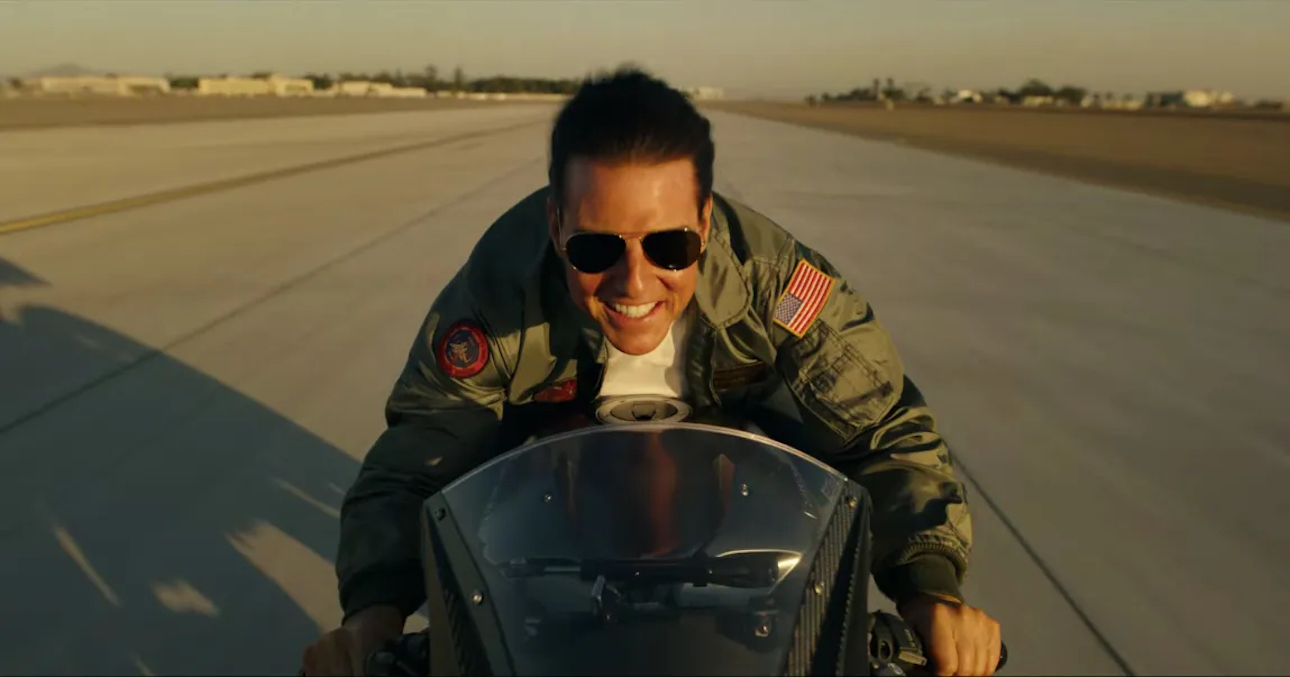
What Top Gun: Maverick’s Historic Success Can Teach Hollywood
To be sure, Maverick introduces a new generation of talented fliers who are all gamely played by a winning and charismatic supporting cast: Glen Powell, Monica Barbaro, and Miles Teller all do superb work and, indeed, reenact a few key moments from the 1986 movie (and raise an honest question about why isn’t Powell a movie star already?). However, this movie is not told from their vantage; it’s told from Maverick’s.
Thirty-six years later, Cruise is determined to prove he’s still the biggest movie star on the planet. And you know what? He succeeds, as it was his intuition to make Maverick as visceral as it is (more on that below) and keep his character front and center. The younger generation earns their spurs, but as one of them mentions by the end of the film, “Maverick’s got five [kills]. That makes him an ace.” The classic isn’t going out of style here.
In that sense, it’s debatable whether Top Gun: Maverick is even a true legacy sequel or just a belated sequel to 1986’s Top Gun. The main character is the same nearly four decades on, and as it turns out with the right star and franchise, audiences may rather see their favorite prove he or she’s still got it rather than see them killed off or exit stage left to make way for newer characters. Somewhat related, this also suggests that at least in the realm of long-running franchises, even younger audiences do not mind seeing actors over the age of 40 like Cruise and Jennifer Connelly lead a movie, which also defies conventional Hollywood wisdom.
Audiences Still Like Strong, Standalone Stories
No matter how you classify it, Top Gun: Maverick is still a sequel. It might mark the biggest box office weekend in Cruise’s career (twice), but it’s also a follow-up on one of his most beloved roles and indeed one of the biggest movies of the 1980s. So it’d be fairly incredulous to suggest Top Gun: Maverick’s success means audiences are craving original stories.
However, it does appear that they miss strong, self-contained ones! A major part of the reason Top Gun: Maverick is hitting so big is the nostalgia of seeing Cruise in the cockpit of a fighter jet again and hearing Kenny Loggins croon about “the danger zone” during a montage of tough Navy guys on an aircraft carrier at sunset. But even as the movie hits many of the key moments older audiences can at least vaguely recall—beachside sports and a euphoric handshake in the third act—the way it goes about getting to them feels refreshingly different from anything else at the multiplex right now.
With an incredibly tight screenplay by Ehren Kruger, Eric Warren Singer, and Christopher McQuarrie (the latter of whom wrote or co-wrote the last three Mission: Impossible movies and Edge of Tomorrow), Top Gun: Maverick is a throwback to the type of blockbusters Cruise has always made: Crowdpleasers that rely on a degree of formula yet stay committed to telling a story with earnest conviction and a strong appreciation for classical structure.
